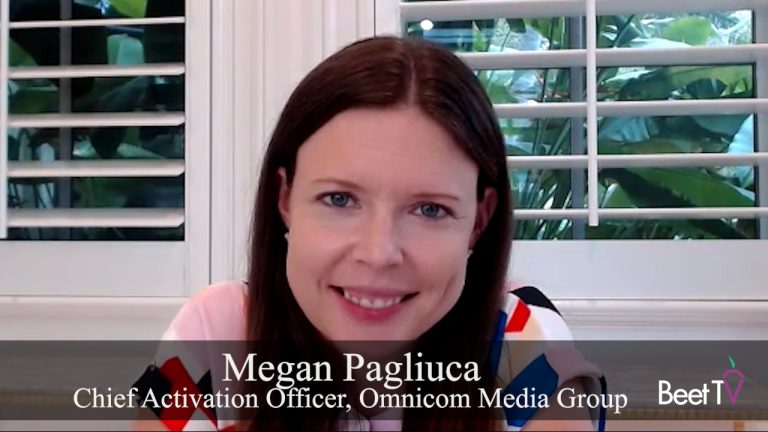
Connected TV promises to revolutionize the way that TV ads are bought, sold and consumed. Getting there is proving a little more difficult.
Emarketer forecasts US CTV ad spend growing 50% in 2021 to $13.41 billion.
But a leading media agency says more could be unlocked if the industry came together to iron out kinks.
OMG’s industry push
Early in November, Omnicom Media Group (OMG) launched its Connected TV Signals Standardization Initiative, an effort to solve “fundamental flaws and gaps in the CTV investment infrastructure, including a lack of linear TV-level transparency; an inability to understand audiences at the household level across partners; and a measurability gap that translates to an open invitation to cyber criminals who are generating millions in ad fraud”.
The initiative focuses on three planks OMG chief activation officer Megan Pagliuca says are undermining CTV growth:
- Inventory: Standardization of the nutrition label for CTV inventory
- Identity: Respect individual privacy and protect publisher data
- Fraud: Illuminating the supply chain
“Connected TV is really moving from like a teenager to a young adult in terms of maturity,” Pagliuca says in this video interview with Beet.TV.
She says she is “pushing a lot of our partners to ensure that they’re enabling this necessary evolution”.
Better signals, better detection
So, what does Omnicom want?
“We’re working across all of our publisher partners in the ecosystem to be able to either pass inventory signals, adopt consistency and identity signals, or have new implementation in terms of fraud prevention,” Pagliuca says.
A key request is for more top-tier publishers to make available inventory indicators like ad pod position and show genre – something Pagliuca says smaller publishers have already begun to do.
She also complains that fraud prevention technologies which have helped in other digital media have not matured enough in CTV.
The Connected TV Signals Standardization Initiative has gained what it calls “support” from AMC Networks, Yahoo, independent sell-side ad platform (SSP) Magnite, and bot detection and human verification company HUMAN (formerly WhiteOps).
Start at home
But what Omnicom is calling for is not the grand solution to the ultimate promise of individual-level CTV delivery. Instead, it sees the CTV opportunity at the household viewing level.
“We think that at this time households are the right compromise,” Pagliuca says. “We are approaching this as what we think it is realistic right now is to be planning. Our cross-screen planning tools will be working at a household level.
“As the publishers actually start to better categorise things like when individuals log into different profiles within connected TV and have that organised, I think we could get to individual level.
“But, right now, anything that I’ve seen of trying to get from household to person level within connected TV is kind of big, scary guesses where they’re modelling based on really without kind of the accurate truth sets.”
You are watching “CTV Links Advertisers With More Diverse Audiences,” a Beet.TV leadership series presented by Magnite. For more videos, please visit this page.